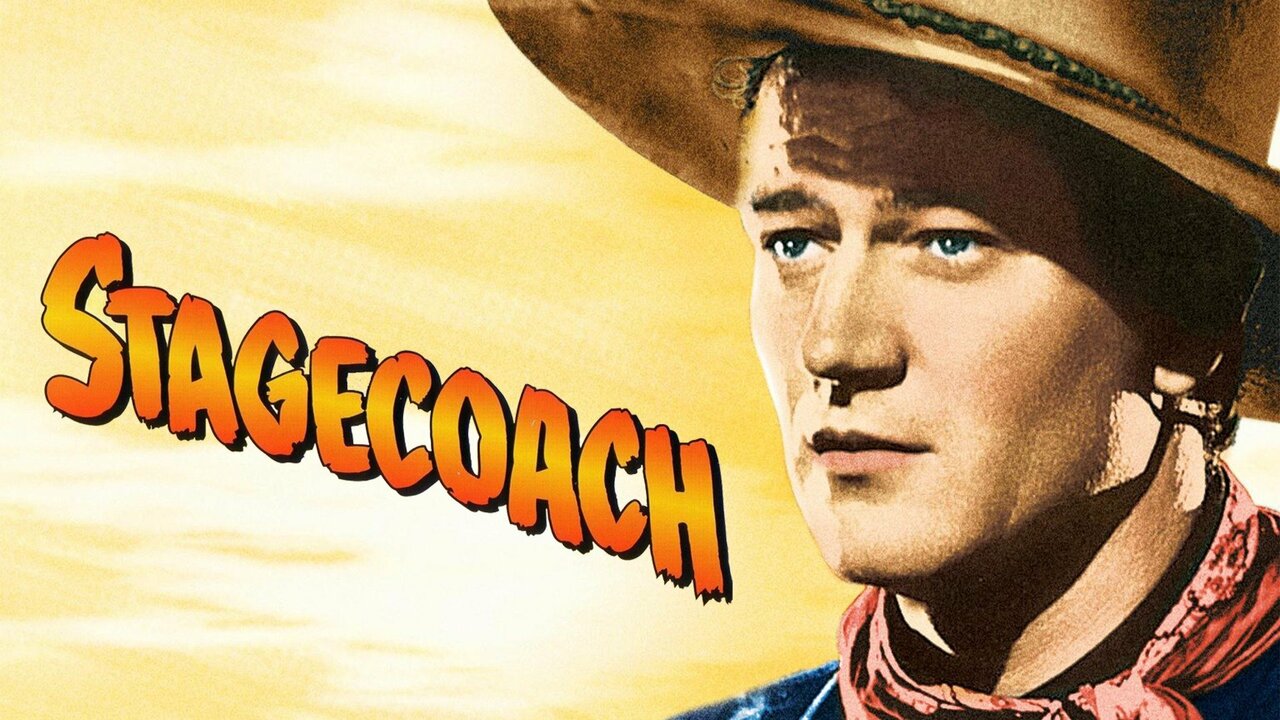
Welcome to the world of “Stagecoach,” a timeless classic that has captivated audiences for decades. Released in 1939, this iconic Western film, directed by the legendary John Ford, takes viewers on an unforgettable journey through the rugged American Wild West. Set against the backdrop of the vast desert landscape, “Stagecoach” tells the thrilling story of a diverse group of strangers thrown together on a perilous stagecoach ride. As the passengers navigate treacherous terrain and face dangerous encounters with bandits and outlaws, “Stagecoach” not only showcases breathtaking action sequences but also delves deep into complex characters and their personal journeys. In this article, we will explore 34 fascinating facts about “Stagecoach,” shedding light on the film’s production, cast, and impact on the world of cinema. So, saddle up and join us as we embark on this exciting cinematic adventure!
Key Takeaways:
- Stagecoach is a classic Western film that transformed the genre, introduced iconic characters, and explored timeless themes like honor and redemption, captivating audiences for over 80 years.
- With its star-studded cast, stunning visuals, and gripping storytelling, Stagecoach remains a timeless masterpiece that continues to inspire and influence filmmakers, leaving an indelible mark on Western cinema.
Epic Western
Stagecoach, directed by John Ford and released in 1939, is considered one of the greatest Western films of all time.
Star-Studded Cast
The movie features an ensemble cast of well-known actors, including John Wayne, Claire Trevor, and Thomas Mitchell.
Cinematic Milestone
Stagecoach is often credited with revitalizing the Western genre, which was in decline during the late 1930s.
Adaptation from a Short Story
The screenplay for Stagecoach was based on Ernest Haycox’s short story titled “The Stage to Lordsburg.
Critical Acclaim
Stagecoach received widespread critical acclaim upon its release and was nominated for seven Academy Awards.
Iconic Music Score
The movie’s musical score, composed by Richard Hageman, became iconic and is still recognized today.
Cultural Impact
Stagecoach played a significant role in shaping the American Western genre and influencing future filmmakers.
John Wayne’s Breakthrough
This film marked John Wayne’s breakout role, propelling him to stardom and establishing him as the ultimate Western hero.
Psychological Depth
Stagecoach delves into the complexity of its characters and explores various human emotions and motivations.
Breathtaking Landscapes
The movie was filmed in stunning locations, showcasing the majestic beauty of Monument Valley in Arizona and Utah.
Intense Action Sequences
Stagecoach features thrilling chase scenes and shootouts, which became defining elements of the Western genre.
Narrative Structure
The storytelling technique of Stagecoach, with its interconnected character arcs, influenced many subsequent films.
Intertwined Stories
The plot revolves around a group of diverse individuals who are forced to travel together on a dangerous stagecoach journey.
Ensemble Dynamics
The chemistry between the various characters adds depth and realism to the film’s narrative.
Groundbreaking Stunt Work
Stagecoach featured innovative stunt work, including daring horseback riding and daring stunt sequences.
Western Archetypes
The movie introduced and popularized several iconic Western character archetypes, becoming a blueprint for future Westerns.
Timeless Themes
Stagecoach explores timeless themes such as redemption, honor, and the struggle between good and evil.
Classic Dialogue
The film is known for its memorable and quotable lines, capturing the essence of the Old West.
Historical Significance
Stagecoach provides a glimpse into the historical backdrop of the American West during the mid-1800s.
Authentic Costumes
The film’s costume design accurately reflects the fashion of the time period, adding to its overall authenticity.
Box Office Success
Stagecoach became a commercial success, solidifying its status as a must-see film of its time.
Political Allegory
Some film scholars believe that Stagecoach subtly explores political themes related to the Great Depression era.
Episodic Structure
The film is divided into distinct episodes, each highlighting the development of its characters.
Cinematic Influences
Stagecoach had a profound influence on future filmmakers, shaping the way Westerns were conceived and executed.
Ambiguous Morality
The movie challenges traditional notions of right and wrong, adding moral complexity to its characters.
Emotional Resonance
Stagecoach evokes strong emotional responses, ranging from tension and excitement to moments of vulnerability and humanity.
Accurate Depiction of Westward Expansion
The film provides an authentic portrayal of the hardships and dangers faced during the era of westward expansion.
Deep Character Development
Stagecoach invests significant time in developing its characters, allowing viewers to form a deep connection with them.
Timeless Appeal
Despite being over eight decades old, Stagecoach remains relevant and captivating to audiences today.
Symbolism and Imagery
The film incorporates symbolism and striking visual imagery to enhance its storytelling.
Subversion of Tropes
Stagecoach challenges traditional Western tropes by presenting complex and multifaceted characters.
Cultural Preservation
The National Film Registry selected Stagecoach for preservation in recognition of its cultural significance.
Enduring Legacy
Stagecoach’s impact is still felt in modern Western cinema, continuing to inspire and influence filmmakers today.
Timeless Masterpiece
Stagecoach is widely regarded as a timeless masterpiece, showcasing the best of the Western genre.
Stagecoach is a landmark film that revolutionized the Western genre and propelled John Wayne to superstardom. Its enduring legacy and cultural impact cannot be overstated. Set against the stunning backdrop of Monument Valley, the film tells the story of a diverse group of passengers on a perilous stagecoach journey. From the suspenseful chase scenes to the nuanced performances, Stagecoach does justice to its gripping narrative.
The film’s screenplay, adapted from Ernest Haycox’s short story, masterfully interweaves multiple storylines, allowing each character to shine. As the stagecoach traverses the treacherous terrain, tensions rise, relationships form, and personal transformations unfold. Stagecoach captivates audiences with its timeless themes of redemption, honor, and the struggle between good and evil.
The star-studded cast brings the characters to life with remarkable performances. John Wayne’s portrayal of the morally ambiguous Ringo Kid is a standout, showcasing his talent and charisma. Claire Trevor delivers a memorable performance as the prostitute seeking a fresh start, while Thomas Mitchell’s portrayal of the alcoholic doctor adds depth to the ensemble. The chemistry between the actors is palpable, creating a sense of authenticity that is hard to forget.
The film’s visual splendor is heightened by its pioneering use of Technicolor. From the vibrant landscapes to the intricately designed costumes, every frame is a visual feast. The breathtaking cinematography, coupled with Richard Hageman’s iconic musical score, elevates the viewing experience to new heights.
Stagecoach’s cultural significance cannot be overstated. It paved the way for future Western films, influencing generations of filmmakers who followed in its footsteps. Its impact on the Western genre is undeniable, from the introduction of archetypal characters to its exploration of complex themes. Even today, Stagecoach remains a beloved classic that continues to captivate audiences of all ages.
In conclusion, Stagecoach is a must-see film that deserves its place in cinematic history. Its groundbreaking approach, iconic performances, and timeless storytelling make it an enduring masterpiece. The 34 facts about the movie Stagecoach shed light on its remarkable journey and reaffirm its status as a true gem of the Western genre.
Conclusion
Stagecoach is a classic movie that has captivated audiences for generations. With its memorable characters, thrilling storyline, and innovative cinematography, it has solidified its place in cinematic history. From John Wayne’s iconic performance as the Ringo Kid to the breathtaking chase scenes through Monument Valley, this film continues to resonate with viewers today.
It is a testament to the talent of director John Ford and the entire cast and crew that Stagecoach remains a timeless piece of cinema. Its impact on the Western genre cannot be overstated, as it set the stage for many films to come.
If you haven’t had the pleasure of watching Stagecoach yet, I highly recommend giving it a chance. Whether you’re a fan of Westerns or simply appreciate great storytelling, this movie is sure to entertain and leave a lasting impression.
FAQs
Q: Who directed Stagecoach?
A: Stagecoach was directed by John Ford, one of the most renowned directors in Hollywood history.
Q: When was Stagecoach released?
A: Stagecoach was released on February 15, 1939.
Q: Who were the main actors in Stagecoach?
A: The main cast of Stagecoach included John Wayne, Claire Trevor, and Andy Devine.
Q: Is Stagecoach a Western film?
A: Yes, Stagecoach is considered one of the classic Western films, often hailed as a defining moment in the genre.
Q: Where was Stagecoach filmed?
A: Stagecoach was primarily filmed in Monument Valley, Utah, which has since become an iconic location for Western films.
Q: How long is the runtime of Stagecoach?
A: The runtime of Stagecoach is approximately 1 hour and 36 minutes.
Q: Did Stagecoach receive any awards?
A: Yes, Stagecoach received several accolades, including two Academy Award nominations for Best Picture and Best Director, solidifying its critical acclaim.
If you're a fan of classic Westerns, don't miss our article on Fort Apache, another John Ford masterpiece. For those who appreciate classic films, check out the fascinating facts about Butterfield 8. And if you're curious about the modern-day Stagecoach Festival, we've got you covered there too!
Was this page helpful?
Our commitment to delivering trustworthy and engaging content is at the heart of what we do. Each fact on our site is contributed by real users like you, bringing a wealth of diverse insights and information. To ensure the highest standards of accuracy and reliability, our dedicated editors meticulously review each submission. This process guarantees that the facts we share are not only fascinating but also credible. Trust in our commitment to quality and authenticity as you explore and learn with us.


